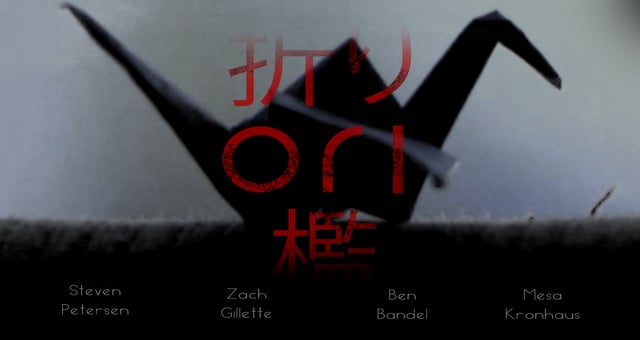In a bleak future, a lone man wanders a recently abandoned greyhound racing track, only to be confronted by what he finds.
Director’s Statement
Development on ASCENDANT began in early 2014. I was at the tail end of post-production on OBSERVANCE, an independent feature film which I wrote and produced. The film, starring John Jarrett, Linsey Farris and Brendan Cowle, was a critical success. It took me to Fantasia International Film Festival and BFI London Film Festival. By all accounts, not a bad reception for a $10 000 film.
Despite the fact that the project had brought me exposure as a writer/producer, I knew in my heart of hearts that I wanted a project that felt wholly my own, with my directorial vision. After so many years working on Observance, funneling all of my contacts and resources into it, I came out of it a little bit jaded. I was ready to put the experience I had gained, into one of my own projects. Suddenly there was this urgency to write a vehicle for me to direct.
I approached my long time collaborator, Samuel Loveridge. Sam and I already had a feature project in development, SEEDER. While we wanted to shoot Seeder, it was too ambitious at the time, so we decided to write a short film script based in the same world, as a sort of proof of concept.
I have always had qualms with the ‘cookie cutter’ short film format. So often the short films that are rewarded, have a short set up and a punchline ending. This style was just, not me. Sam and I wanted to do something a little different, more atmospheric, like a mood piece. Something that might alienate some audiences, but bring in an audience like ourselves, who were interested in taking time in a world and with a character. Tarkovsky, David Lynch, David Cronenberg and Roman Polanski, were some of the greats I drew inspiration from. So I felt confident that by making a sort of vignette, I was holding true to my own vision.
After delving into the back story of one of our characters in Seeder, we clung to this image of an abandoned greyhound race track. The idea conjured up so many images and mysteries for me. So we decided to confine the film to this singular location.
After visiting several greyhound tracks, we realized there was a dichotomy in the culture of greyhound racing, on one side it was full of joy and passion, on the other side it was filled with a sinister, dirty mystique. I remember approaching one of the preparation rooms by the track, where all the dogs were tested before a race, and I noticed that all the windows were blacked out. We were not allowed to look back there. I found myself imagining what was going on behind those walls. That inspired a lot of the story for me.
Carl Robertson, the Director of Photography, and I had been discussing shooting something in black and white for years, always sharing references of films and photography. With Ascendent we were finally able to collaborate and create a vision where our demand for perfection without compromise was achieved. As the screenplay had no dialogue, it gave us the opportunity to tell a story that was almost completely told through subtext. This was something both challenging and exciting for the both of us.
Ascendant was not an easy film to make, it took nearly 3 years to get off the ground, with endless issues in pre-production. From locations and crew dropping out last minute, to our trained greyhound ‘Coco’ dying of cancer weeks before the shoot, it felt a little like the idea was cursed. To cover the costs of the set backs we had to launch a second crowdfunding campaign.
What nearly put the nail in the coffin was when we heard the greyhound racing had been banned in the state of New South Wales, putting the whole project on hold indefinitely. It was as if the story of the film had become a reality, all greyhound tracks around NSW were to be shut down and made abandoned. It really felt like we would never be able to finish this film.
After several months of uncertainty, the ban was lifted and we were finally able rally up the crew and start shooting. The shoot itself didn’t come without massive difficulty and stress, but thanks to a dedicated cast and crew, we all persevered and got something we were all immensely proud of.
Sound was a very important element to this film, as the world outside the track was to be informed purely by sound. David Gaylard, the Sound Designer, and I talked at length about the specifics of the machines and factories surrounding the track. We wanted to use the rhythm of these sounds to build the suspense and ambiance, which also had help from our Composer, Luke McDonald, who created the subtle score and classical music from the speakers.
Expertly edited together by Charles Ivory, who I had previously worked with on Observance. After a 30 minute assembly edit, Charles and myself spent months cutting the film down to a reasonable length, still long for a short film, but we found a pace and structure that we were both happy with.
At all times, this film is open to interpretation. I’ve always been attracted to subtle and evocative storytelling. Stories that allow you to make your own conclusions, and I hope that coming out of watching this film, you’ll be left with a mood and a world still lingering in your mind.



